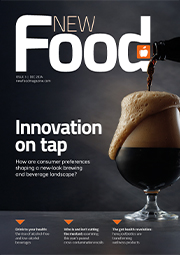Whitepaper: PCR: design delivers success
- Like
- Digg
- Del
- Tumblr
- VKontakte
- Buffer
- Love This
- Odnoklassniki
- Meneame
- Blogger
- Amazon
- Yahoo Mail
- Gmail
- AOL
- Newsvine
- HackerNews
- Evernote
- MySpace
- Mail.ru
- Viadeo
- Line
- Comments
- Yummly
- SMS
- Viber
- Telegram
- Subscribe
- Skype
- Facebook Messenger
- Kakao
- LiveJournal
- Yammer
- Edgar
- Fintel
- Mix
- Instapaper
- Copy Link
Posted: 9 April 2018 | Hygiena | No comments yet
Polymerase Chain Reaction (PCR) has gained wide acceptance as a pathogen detection tool in the food industry, and the popularity of the method continues to grow…
Two choices in PCR technology are available for the industry to choose from end-point and real-time PCR (RT-PCR).
In end-point PCR, primers or short oligonucleotides are designed to flank the target sequence which is amplified during the PCR reaction. The amount of PCR product (amplicon) produced during the PCR is detected using a non-specific double strand DNA (dsDNA) binding dye.
Traditionally, the amplicon was visualised using agarose gel electrophoresis. But fluorescent dyes such as SYBR Green are now used to measure the accumulated PCR product at the end of PCR without the need to run a gel and thus keeping the system closed.
Typically, this is achieved by performing a heating step during which the double stranded (ds)DNA come apart releasing the fluorescent dye and consequently resulting in a decrease in fluorescent signal. The amount and temperature at which the fluorescent signal changes correspond to the strength and type of PCR product generated during the PCR event.
The rest of this whitepaper is restricted - login or subscribe free to access


Why subscribe? Join our growing community of thousands of industry professionals and gain access to:
- bi-monthly issues in print and/or digital format
- case studies, whitepapers, webinars and industry-leading content
- breaking news and features
- our extensive online archive of thousands of articles and years of past issues
- ...And it's all free!
Click here to Subscribe today Login here










